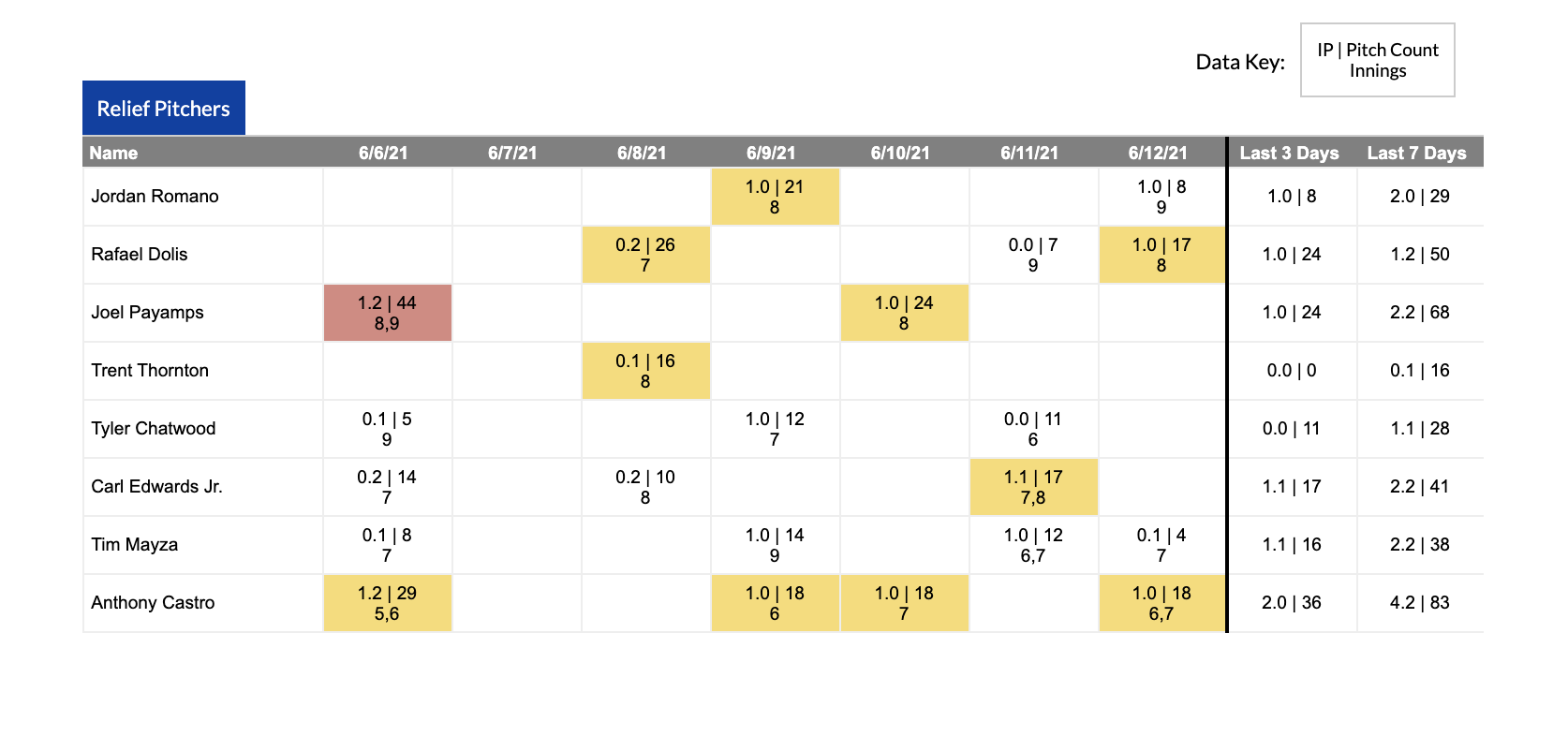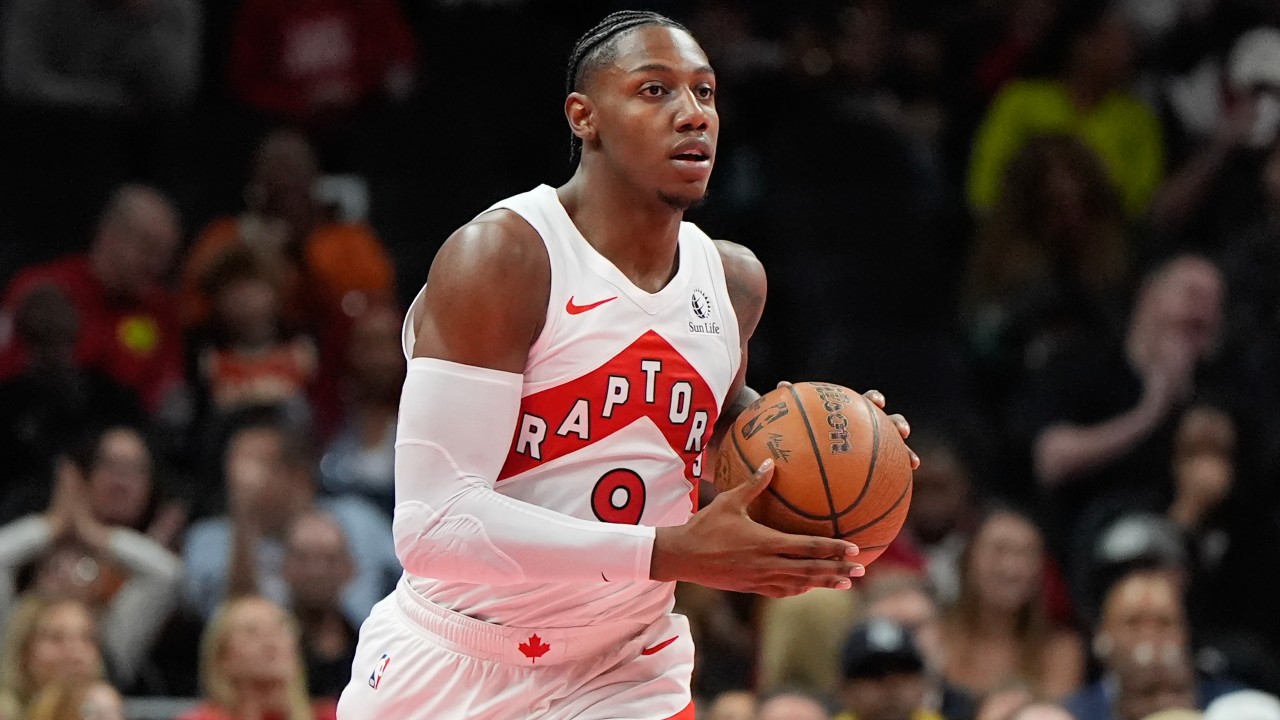
We don’t often mention him in this breath, but Robbie Ray has been one of the more dependable starting pitchers across the majors over the last three seasons. Not always dependable to command and control his pitches, mind you. But dependable to take the ball every five or six days and give you everything he’s got.
That’s arguably been the biggest benefit the Toronto Blue Jays have received from Ray since last August’s trade deadline in exchange for Travis Bergen — a 27-year-old left-handed reliever who’s since rejoined the organization — plus a bargain $8-million, one-year free agent commitment less than three months later. Dependability and durability. Quality innings pitched.
Of course, it’s less evident on days like Sunday, when the Blue Jays offence goes bananas with 18 runs on 20 hits — eight of them homers — in an 18-4 throttling of the Boston Red Sox. Aside from rookie catcher Riley Adams, every batter in Toronto’s starting lineup had at least a hit, and six of them had multiple. Bo Bichette was 4-for-5; Teoscar Hernandez went 3-for-6; Lourdes Gurriel Jr. and Vladimir Guerrero Jr. were each 3-for-5. Pete Walker and Matt Buschmann could’ve thrown a couple innings themselves and the Blue Jays probably would’ve still come away with a win.
But thanks to Ray’s continued reliability, the Blue Jays could’ve gotten by with only about a quarter of the offence they generated. Working to make in-game adjustments through occasional velocity fluctuations, the left-hander ran up 17 swinging strikes over six innings, holding the Red Sox to three runs on four hits and three walks while striking out 10. And he did it with only two pitches, working up with his fastball and down with his slider, because that’s all he needed to add another deep outing to his 2021 game log.

“I think the fastball command was pretty good. It definitely could be better. I felt like I was able to pound arm-side all day. Glove-side, I was maybe leaking out over the plate a little bit more than I wanted to. That’s something I’ll focus on in my next bullpen,” Ray said. “I felt like the slider maybe was catching a little too much plate — but it had really good shape to it. So, it’s just a matter of changing my sights or changing where I started. I’ll go back and look at it later. But I felt like the shape on it was great. I felt like I was able to throw it and get some really big outs with it.”
Since 2019, Ray’s made the fourth-most starts and thrown the 30th-most innings across MLB. And his innings total would likely be much higher if he hadn’t gone through a winding mechanical odyssey in 2020, which led him to walk a batter an inning prior to joining the Blue Jays last August.
There’s nothing easy about taking the ball that often — particularly during an era in which pitcher health is as tenuous as ever. Entering play Sunday, there were 159 pitchers across the majors on the injured list, 10 of them belonging to the Blue Jays organization. But the last time Ray missed significant time to injury was 2018, when an oblique issue held him out for two months. Since then, he’s made only two trips to the IL, returning each time as soon as his 10 days were up.
Remember, we’re talking about a guy who has typically lived in the 92-94 m.p.h. range with his fastball, and is throwing it even harder this season, averaging over 95-m.p.h. A guy with an explosive, rearing-all-the-way-back delivery that can perhaps most delicately be described as “effortful.” A guy who you can literally hear throughout the ballpark, and across broadcast airwaves, as he grunts like Jimmy Connors at the US Open behind every pitch.

“And the funny thing about him — the deeper he goes into the game, the harder he throws,” said Blue Jays manager Charlie Montoyo. “If you look at his last, whatever, 20 pitches every game, he’s around 97, 96, 98.”
You’d think a guy like that might get hurt every now and then. But Ray’s worst injury of late didn’t even occur on the field. On the eve of the season, after a dominant run of spring training success, Ray fell down a flight of stairs while carrying his son and smashed up his pitching elbow. Less than two weeks later, he threw 84 pitches in Toronto’s 10th game of the season, beginning what has been a remarkably successful campaign.
“I think it’s taking care of myself in the gym, doing my arm care — just staying on top of stuff like that,” Ray said of his durability. “And, honestly, this year I feel like there’s less stress on my arm because my delivery is so sound. I feel really, really comfortable with my delivery — it feels repeatable. So, I think that also has a big impact on it.”
Ray now leads the Blue Jays in innings pitched despite missing that week-and-a-half, and has given the Blue Jays six innings or more in eight of his dozen outings. Over his last 10 starts, a span of 60.1 innings, he’s struck out 86 and walked only eight. For a club that’s withstood significant injury blows up and down its pitching staff, Ray’s dependability and durability has been an absolute godsend.
“He deserves a lot of credit because he came in and threw strikes and gave us a chance again. And he’s been doing that every start,” Montoyo said. “That’s the best compliment I can give him, man. When he takes the mound, we have a chance to win. And that’s awesome. The whole team feels it.”
And, boy, did his team need a deep outing Sunday after Montoyo was forced to run through the only relief arms he can consistently trust to seal a victory 24 hours earlier. Anthony Castro and Tim Mayza had each pitched on three of the prior four days, making them yellow bordering red on Montoyo’s availability card. Meanwhile, Rafel Dolis had pitched on back-to-back days, and Jordan Romano had pitched on two of the last four while battling forearm tightness.

That meant any narrow, late-inning leads would likely be handed to some combination of Trent Thornton, Carl Edwards Jr. and Tyler Chatwood. Any discerning Blue Jays fan will tell you that hasn’t been a particularly successful formula of late. But if you’re Montoyo, where else do you turn? Rounding out his bullpen Sunday was Joel Payamps, a game competitor whose lack of swing-and-miss stuff had caught up to him in the form of runs allowed in three of his last four routings; Jeremy Beasley, plucked off the fringe of Arizona’s roster earlier this season for cash; and Tayler Saucedo, a 27-year-old rookie who’d been a major-leaguer for 24 hours.
Fortunately for Montoyo, it never came to that as Toronto’s offence had its biggest day of the season. The Blue Jays have been hitting everything in this series and kept rolling right along against Red Sox starter Martin Perez in the first inning, putting four runs on the board before Ray even took the mound.
With the exception of Bichette, who walked, all eight Blue Jays batters who came to the plate in that opening frame put the ball in play at 89-m.p.h. or harder, including a towering, three-run homer by Hernandez, and a screaming solo shot over the Green Monster by Gurriel.
Lourdes have mercy, this lineup is SCARY pic.twitter.com/GXAlbDxTiB
— Toronto Blue Jays (@BlueJays) June 13, 2021
And they weren’t done there, as Marcus Semien clobbered a 2-1 cutter 414-feet over the centre field wall in the second for his 15th homer of the season and Toronto’s third through the game’s first 10 plate appearances. A 105-m.p.h. Bichette single later, Perez’s day was done.
Semi’s shipping out of Boston pic.twitter.com/xzYB7L91Hf
— Toronto Blue Jays (@BlueJays) June 13, 2021
The Blue Jays weren’t any kinder to his replacement, Ryan Weber, a soft-tossing swingman summoned to the Red Sox roster Sunday to provide disaster insurance behind Perez. Jonathan Davis, Bichette, and Guerrero Jr. all came up with base hits against him in the fourth, before Hernandez tattooed a 2-1 Weber curveball 440-feet to deep centre for his second three-run bomb of the game.
“I’m starting to feel good again at the plate,” Hernandez said. “I had a couple of weeks that I wasn’t making good contact. I was chasing a lot of pitches out of the strike zone. And I’m trying to go back to the way I was last month and trying to make some adjustments and start hitting the ball better.”
An inning later, it was Bichette’s turn to decimate a Weber curveball, as the Blue Jays shortstop sent a three-run shot of his own onto Lansdowne St. And an inning after that, Cavan Biggio went yard with Toronto’s sixth bomb of the afternoon. By the eighth, the Red Sox were sending utility infielder Marwin Gonzalez to the mound, featuring a sneaky 89-m.p.h. fastball and a looping 45-m.p.h. curve. He threw Boston’s first 1-2-3 inning of the day.
The Blue Jays lineup is a fireworks show when its clicking all at once like this — and that’s without George Springer, a two-time Silver Slugger winner, atop it. It’s a top-10 offence that has carried the club through an uneven first 63 games of the season, mitigating the damage done by a pitching staff often held together with scotch tape and popsicle sticks.
If the Blue Jays can sort out a beleaguered bullpen, lengthen a top-heavy starting rotation, and maybe even give Montoyo a bench upgrade or two, they could ride that offence even further and threaten to make some noise over the back-half of the season. And if they do, a significant bedrock of it all will be the dependability and durability Ray’s provided.
“I feel like the biggest thing is I’ve built off of every start,” Ray said. “Today, I was at 88 pitches after six innings — whereas my last start I was 96 going into the seventh. So, getting early outs was the biggest thing. And I think that’s something I’ve been able to do this year — is take something from the previous start and build on top of it for the next one.”




